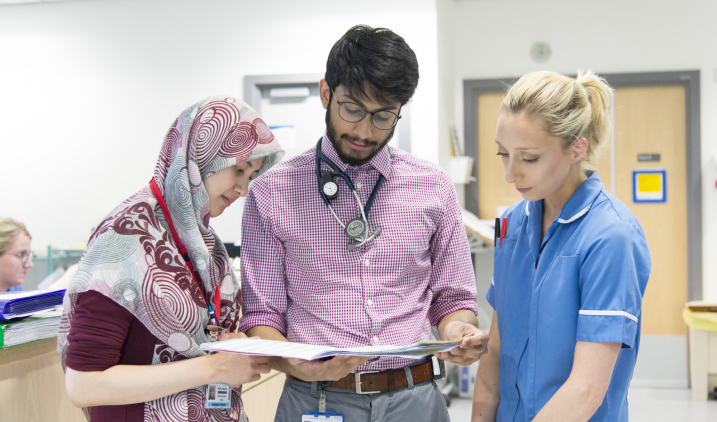Audiovestibular medicine
Doctors in audiovestibular medicine investigate, diagnose and manage hearing, balance and communication disorders in adults and children from birth onwards.
You’ll diagnose and treat hearing and balance disorders in patients of all ages, from newborn babies to older adults.

Life as a doctor in audiovestibular medicine
Equally, you’ll see adults with hearing loss and will investigate the underlying medical problems, which can be wide-ranging and include immunological problems.
- inherited (genetic)
- infectious
- inflammatory
- vascular (relating to the blood vessels)
- traumatic (following a wound or injury)
- metabolic [2] (relating to the range of biochemical processes that occur in the body)
- neurodegenerative (nervous system dysfunction)
- clinical and neuro-otological examination, which might include tests to evaluate a patient’s balance
- measurement of audiovestibular function i.e. relating to the auditory functions of the ear
- investigations, including radiological imaging and a variety of blood and urine tests
- assessment for suitability for hearing aids and cochlear implants
- treatment of infection, autoimmune disorders (diseases where the body’s immune system attacks its own tissues), and peripheral vestibular dysfunction (i.e. dysfunction of the balance organs of the inner ear). This could be through pharmaceutical products, repositioning manoeuvres and physiotherapy involving relevant professionals
The care you deliver can considerably improve the quality of life for a patient and make your role incredibly rewarding.
How much can I earn?
How about the benefits?
- make a difference
- flexible and part-time working
- high income early in your career
- work anywhere in the world
- excellent pension scheme
- good holiday entitlement
- NHS discounts in shops and restaurants
Must-have skills
- excellent communication skills to manage a wide range of relationships with colleagues, and patients and their families
- emotional resilience, a calm temperament and the ability to work well under pressure
- teamwork and the capacity to lead multidisciplinary teams
- problem-solving and diagnostic skills
- outstanding organisational ability and effective decision-making skills
- first-class time and resource management for the benefit of patients
In addition, doctors in audiovestibular medicine need to demonstrate:
- an interest in keeping up to date in audiovestibular clinical practice and contributing to research and training
- the ability to interact well with patients who may have communication difficulties, emotional problems and long-term conditions
- administrative and organisational skills
Entry requirements
If you already have a degree, you could study for a four-year postgraduate degree in medicine.
Some medical schools look to recruit a mix of students from different backgrounds and geographical areas, so your educational and economic background and family circumstances could be considered as part of your application.
What are my chances of starting a career in audiovestibular medicine?
How to become a doctor in audiovestibular medicine
After your foundation programme, you can apply for paid specialty training [7] to become a doctor in audiovestibular medicine, which will take a minimum of six years.
Where a career as a doctor in audiovestibular medicine can take you
- specialise or conduct research
- teach medical students or postgraduate students in training
- get involved in research at universities, the NHS or private sector
Other roles that may interest you
- Neurologist [16]
- Immunology [17]
- Allergy [18]
- Medical ophthalmology [19]
